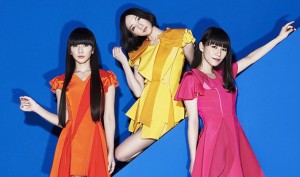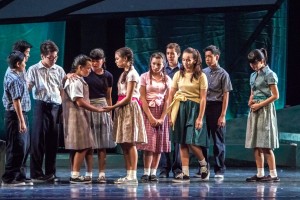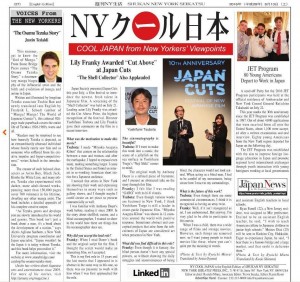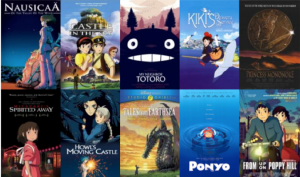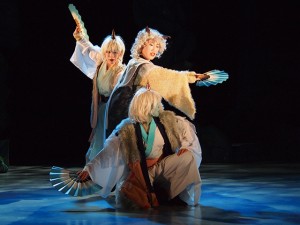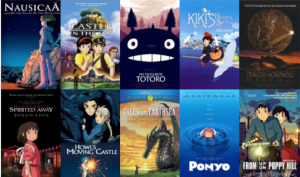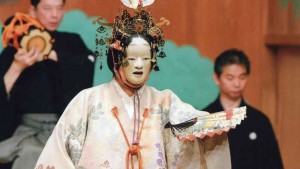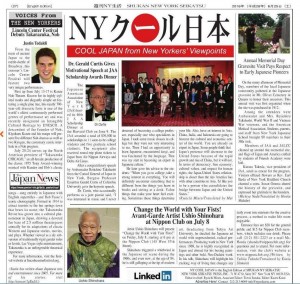JQ Magazine: Book Review — ‘Are You an Echo?’
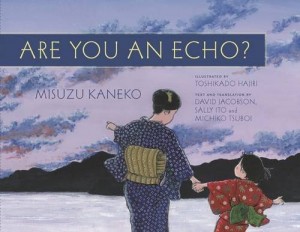
“This is an outstanding collection of poems that reflects a wide variety of emotions and observations while giving readers new and colorful images of Japan.” (Chin Music Press)
By Rashaad Jorden (Yamagata-ken, 2008-10) for JQ magazine. A former head of the JETAA Philadelphia Sub-Chapter, Rashaad is a graduate of Leeds Beckett University with a master’s degree in responsible tourism management. For more on his life abroad and enthusiasm for taiko drumming, visit his blog at www.gettingpounded.wordpress.com.
As we might take for granted the ability to research anything and everything quickly, it’s easy to forget how much of a struggle it has been (and still might be) to discover fascinating aspects of history. But when those discoveries are made, it’s satisfying not just for those who make the extensive effort—it’s rewarding for those who have benefited from the discoveries.
Thanks to fellow author Setsuo Yazaki, English-language speakers from all over the world now have the opportunity to read Are You an Echo? The Last Poetry of Misuzu Kaneko, a collection of poems produced by the late lauded children’s writer. Yazaki was a young student when he read Misuzu’s poem “Big Catch,” and he was automatically intrigued by her. So he wanted to discover more of her works and immediately started trying to find them—only to run into run one obstacle after another. Finally, Setsuo made a breakthrough when he was able to reach Misuzu’s younger brother Masasuke (then 77 years of age), who handed Yazaki a set of diaries, which included poems Misuzu wrote.
A prolific writer, Misuzu’s works regularly appeared in popular magazines. She wrote 512 poems, but only a few of them appear in Are You an Echo? Even so, that small sample size is enough to give you a glimpse into her life. Misuzu grew up in a fishing village in western Japan, and she loved being around water (she wrote one poem about an island she visualized but couldn’t reach). She also had a very vibrant imagination, and everything she encountered had feelings, like snowflakes (she’s actually concerned about their well-being) or telephone poles (which at one point, got sleepy). Even cicadas wore clothes in Misuzu’s world.
JQ Magazine: Nippon in New York — ‘Shin Godzilla,’ New York Comic Con, Ramen Slurpfest, ‘We Are X’
By JQ magazine editor Justin Tedaldi (CIR Kobe-shi, 2001-02). Justin has written about Japanese arts and entertainment for JETAA since 2005. For more of his articles, click here.
The Japan-centric events of the month ahead promise to be as rich and full as autumn itself—brisk and colorful, with a dash of unpredictability.
This month’s highlights include:
Barclays Center, 620 Atlantic Avenue (Brooklyn)
$49, $89
ESL, the world’s largest esports company, brings the East Coast’s largest esports tournament to Brooklyn! This two-day tournament will feature a $250,000 Counter-Strike: Global Offensive competition and a $75,000 Street Fighter V Brooklyn Beatdown offline tournament! In addition to the tourneys, ESL One New York will feature a wide array of activities as part of the main event, including pro player autograph sessions, virtual reality experiences, the ESL Shop, and other fan fest activities.
Sunday, Oct. 2, 7:00 p.m.
DROM, 85 Avenue A
$13 advance, $18 at the door
“I started writing some of the material for the album on my final year on JET,” says New York City-based alum Tony Waldman (Mie-ken, 2005-09), drummer and co-composer for progressive rock quintet Edensong, about the band’s new album, Years in the Garden of Years. “Some of the music is definitely inspired by Japanese RPG game music and references stuff both musically and in the titles of songs.” The band’s self-released 2008 debut The Fruit Fallen was hailed as a “masterpiece” by critics, and helped pave the way for live shows and notable festival appearances throughout North America. Their new release further explores their intricately composed eclectic orchestral rock style, culminating in this special live performance.
Wednesday, Oct. 5, 7:30 p.m. and 9:30 p.m.
Lew Tabackin Trio with special guest Toshiko Akiyoshi
Dizzy’s Club Coca-Cola, Broadway and 60th Street, fifth floor
$40, $25 students
One of the greatest marriages in jazz history, NEA Jazz Master Toshiko Akiyoshi and reed virtuoso Lew Tabackin have been leading and performing in top jazz groups since the sixties. Akiyoshi is known for her challenging and full-textured arrangements that sometimes evoke her homeland, Japan, while Tabackin is recognized for his dedication to showing the full range of possibilities on his instrument—melodically, rhythmically, and dynamically. Together, they lead an eponymous big band of international renown, but this special one-night-only engagement at Dizzy’s will showcase the duo in a more intimate small group setting.
JQ Magazine: Nippon in New York — Perfume, Guitar Wolf, Digimon Premiere, The Joy of Sake
By JQ magazine editor Justin Tedaldi (CIR Kobe-shi, 2001-02). Justin has written about Japanese arts and entertainment for JETAA since 2005. For more of his articles, click here.
As the summer winds fade into fall colors, the weeks ahead are shaping up with these exciting events, ready to be enjoyed after Labor Day.
This month’s highlights include:
Wednesday, Aug. 31, 6:00 p.m.
Asia Society, 725 Park Avenue
Free (click here for tickets)
Winner of the Special Jury Mention for Best Documentary Director at the 2015 Tribeca Film Festival! Go behind the scenes at Japan’s Yoshida Brewery, where a brotherhood of artisans, ranging from 20 to 70, spend six months in nearly monastic isolation as they follow an age-old process to create sake, the nation’s revered rice wine. This special screening precedes the film’s public airing on PBS. Followed by a Q&A with producer Masako Tsumura.
Sept. 3-4, 8:00 p.m.
Manhattan Center Hammerstein Ballroom, 311 West 34th Street
$40.50-$65.50
Formed in 2000 in Hiroshima by a trio of girls in the same performing arts academy, Perfume has been one of the biggest J-pop success stories of the past decade. Now, with the release of their latest album Cosmic Explorer, the electronic pop trio is gearing up for its sixth tour, with a pair of shows at the legendary Hammerstein Ballroom.
Sept. 9-10
Gerald W. Lynch Theater, 524 West 59th Street
$30-$40, $15 students
An original musical inspired by the life of Sadako Sasaki, a 12-year-old girl who died from leukemia resulting from radiation caused by the atomic bomb dropped on Hiroshima. She was made famous for having folded over a thousand paper cranes to fulfill an old Japanese legend that would grant one wish to anyone who would fold one thousand cranes. To this day, she is a reminder of innocent victims of war, and her story of her thousand paper cranes have inspired a movement of folding cranes for peace. The musical juxtaposes Sadako’s true story and the events leading up to her death in November 1955 with a fictional story about a group of her friends who rallied support from around Japan to have a monument built in Sadako’s memory to honor the children victims of the atomic bomb.
JQ Magazine: Manga Review — ‘The Osamu Tezuka Story’
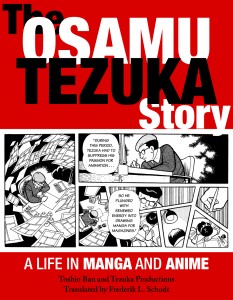
“Gargantuan in size at 928 pages (including detailed appendixes), this manga-format biography is a surprisingly quick read. Its fast-paced visuals and story provide a unique vantage to observe a legendary figure that leaves you energized after each sitting.” (Stone Bridge Press)
By Alexis Agliano Sanborn (Shimane-ken, 2009-11) for JQ magazine. Alexis is a graduate of Harvard University’s Regional Studies-East Asia (RSEA) program, and currently works as a program coordinator at the U.S.-Asia Law Institute of NYU School of Law.
For many, the newest publication from Stone Bridge Press will seem like a long lost friend. Originally serialized in 1989 and completed in 1992, The Osamu Tezuka Story: A Life in Manga and Anime, written and illustrated by Toshio Ban in association with Tezuka Productions and translated by Frederik L. Schodt, is a book worth the wait. Gargantuan in size at 928 pages (including detailed appendixes), this manga-format biography is a surprisingly quick read. Its fast-paced visuals and story provide a unique vantage to observe a legendary figure that leaves you energized after each sitting. Whether you first learned about manga and anime yesterday, five years ago, or have been a diehard fan for decades, this book has something to offer.
Manga and anime artist Osamu Tezuka carries the weight that Walt Disney carries in the West. His vision, ingenuity, and motivation defined and propelled the bourgeoning manga and anime industry of the fifties, sixties, and seventies. This book follows Tezuka through it all: from his birth in Osaka in 1928 to his death in 1989, and everything in between. Through him, we see 1930s Japan and the rise of militarism, the authoritarian interwar, the penurious postwar, and the gradual rebirth and growth leading to the booming days of the 1980s. In his lifetime, Tezuka experienced it all—feast and famine, war and peace—and it is fervently captured in his artwork and stories.
This book is written and illustrated by Toshio Ban, a longtime animator and friend of Tezuka. Carefully researched and painstakingly detailed, Ban covers everything from Tezuka’s lifelong fascination of insects, his struggle balancing his academic passion of medicine, and his artistic passion of manga and anime, to his various commutes between Takarazuka City and Tokyo. While some details are lacking (for example, the reasons behind his first animation studio Mushi Production’s bankruptcy and financial problems), Ban has created a work exhaustive as it is fascinating.
Justin’s Japan: ‘The Osamu Tezuka Story’
By JQ magazine editor Justin Tedaldi (CIR Kobe-shi, 2001-02) for Shukan NY Seikatsu. Justin has written about Japanese arts and entertainment for JETAA since 2005. For more of his articles, click here.
This summer, get to know the “God of Manga.”
From Stone Bridge Press comes “The Osamu Tezuka Story,” a documentary manga biography of the influential artist and the birth and evolution of manga and anime in Japan.
Written and illustrated by longtime Tezuka associate Toshio Ban and newly translated into English by Frederik L. Schodt (author of “Manga! Manga! The World of Japanese Comics”), this colossal 928-page trade paperback covers the entire life of Tezuka (1928-1989), warts and all.
“Readers may be surprised to see how honestly Tezuka is depicted, as an extraordinarily obsessed individual whose family rarely saw him and as someone who suffered from his creative impulse and hyper-competitiveness,” writes Schodt in the introduction.
The creator of such beloved characters as Astro Boy and Kimba the White Lion, Tezuka also experimented with darker, more adult-themed works, penning more than 150,000 pages (over 700 volumes) in his lifetime, dwarfing any other manga artist. The book includes a detailed appendix of his complete creative output.
“As Tezuka grows and develops you are slowly introduced to his world and genius. This book isn’t just a book about a man, it’s a book about the development of a nation,” says Alexis Agliano Sanborn, a New York University program coordinator and Japan specialist. “Japan wouldn’t be the Japan it is today without Tezuka, and this book helps you realize it.”
For more information, visit www.stonebridge.com/catalog/the-osamu-tezuka-story.
JQ Magazine: Nippon in New York — Studio Ghibli, Asa Akira, Liberty City Anime Con, Sekai no Owari
By JQ magazine editor Justin Tedaldi (CIR Kobe-shi, 2001-02). Justin has written about Japanese arts and entertainment for JETAA since 2005. For more of his articles, click here.
In the dog days of summer, it’s best to escape the heat in a place that’s cozy and cool. For those into Japanese cultural events, this month offers a diverse selection of film premieres and live music—all in the comfort of indoor air conditioning.
This month’s highlights include:
Various dates from Aug. 3
Village East Cinema, 181-189 Second Avenue
$10, $15
This month, Village East Cinema presents four more films from the legendary Studio Ghibli and Academy Award-winning director Hayao Miyazaki! Here’s your chance to enjoy some Japan’s greatest and most influential animated films on the big screen. The morning screenings are English dubbed versions, while the evening screenings are in Japanese with English subtitles. This month’s selections include Japan’s all-time box office champ Spirited Away (Aug. 3-4), Howl’s Moving Castle (Aug. 10-11), Tales from Earthsea (Aug. 17-18), and From Up on Poppy Hill (Aug. 31-Sept. 1).
Tuesday, Aug. 9, 2016
Asa Akira, Dirty Thirty
$12.99 Kindle, $13.64 paperback
The world knows her as a porn star…but it’s her way with words that will touch you again and again. As she contemplates turning thirty years old while still being in the adult film trade, Asa Akira delves into her past, present, and future, exploring the events that brought her to where she is now and the surprising and insightful plans she has for her future. Asa’s perceptive, funny, and straightforward writings on love, sex, death, marriage and celebrity come together in this surprising book of essays that will have you laughing hysterically one minute and deep in reverent thought the next. Personally revealing as well as universal, Dirty Thirty marks the coming of age of a new literary star.
Aug. 12-17
Flamboyán Theater at The Clemente, 107 Suffolk Street
$13-$18
OZmate, a musical theater company based in Takarazuka, proudly presents The Legend of Oni with an all-female cast as part of the New York International Fringe Festival (FringeNYC)! The Legend of Oni is a musical about two Oni, ogres in Japan, in the pre-samurai Heian period. Lose yourself in the beautiful Japanese days of old with wonderful kimono costumes under the direction of Naoko Tsujii. OZmate also appears earlier this month as part of J-Summit New York at the Bowery Electric (327 Bowery) on Sunday, Aug. 7, with additional performances by Truthseekers, LUST, Lulla LayLa, Tamuro Rie, Naoki, Megumi, Shino Frances, Takaro Nishimura, and Emi Matsushita. Doors open at 5:30 p.m.; tickets are $15 advance, $18 at the door (includes one drink).
JQ Magazine: Nippon in New York — Studio Ghibli, JAPAN CUTS, Hotei, ‘Takarazuka CHICAGO,’ Kyary Pamyu Pamyu
By JQ magazine editor Justin Tedaldi (CIR Kobe-shi, 2001-02). Visit his Examiner.com Japanese culture page here for related stories.
After you’ve seen the outdoor fireworks, enjoy some summer events in the cool indoors, whether it’s catching one of the dozens films premiering at Japan Society’s annual festival, or enjoying anything from traditional theater to the latest pop sensation.
This month’s highlights include:
Various dates beginning July 6
Village East Cinema, 181-189 Second Avenue
$10, $15
This month, Village East Cinema presents four films from the legendary Studio Ghibli and Academy Award-winning director Hayao Miyazaki! Every Wednesday and Thursday from July 6 through July 28 offers a chance to enjoy some Japan’s greatest and most influential animated films on the big screen. The morning screenings are English dubbed versions, while the evening screenings are in Japanese with English subtitles. July’s selections include Castle in the Sky, My Neighbor Totoro, Kiki’s Delivery Service, and Princess Mononoke.
July 13-17
Rose Theater, Broadway at West 60th Street, 5F
$30-$125
In the enigmatic Japanese dramas of Noh, ancient stories from classical Japanese literature and oral traditions come to life in a sublime, ritualized blend of poetry, music, drama, and dance. The divide between the natural and supernatural is bridged as spirits and humans interact in a world rife with symbolism. The nearly 700-year-old dramatic form—known to many for its highly stylized masks and elegantly simple set featuring a single pine tree—is one of the world’s oldest continuously performed genres of performance art and was recently designated an “Intangible Cultural Heritage” by UNESCO. Kiyokazu Kanze—the 26th Grand Master of the Kanze School and a descendent of the founder of Noh—brings the profound lyricism and aesthetic elegance of this ancient dramatic art form to New York as part of this year’s Lincoln Center Festival. A special lecture and demonstration by Kiyokazu Kanze will be held July 12 at Japan Society; click here for more info and tickets.
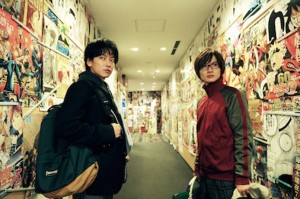
‘Bakuman’ © 2015 TOHO Amuse DENTSU SHUEISHA Victor KDDI GYAO Crescendo NIPPAN JR Kikaku LINE © Tsugumi Oba, Takeshi Obata SHUEISHA All Rights Reserved.
July 14-24
Japan Society, 333 East 47th Street
$10-$20 (single screenings)
North America’s largest festival of new Japanese film returns for its 10th anniversary edition, offering eleven days of impossible-to-see-anywhere-else screenings of the best new movies made in and around Japan with special guest filmmakers and stars, post-screening Q&As, parties, giveaways and much more. With special guests such as Lily Franky, Atsuko Maeda and Sion Sono, this year’s festival guest list is the largest in history, and includes directors, stars, producers and more. Make sure to also check out this year’s expanded DOCUMENTARY FOCUS and EXPERIMENTAL SPOTLIGHT sections. Venture out of the mainstream to discover new work by some of Japan’s most vital and interesting nonfiction and avant-garde practitioners. The experimental lineup is dedicated to animation, offering vibrant short-form alternatives to the ubiquitous anime for which Japan is so famous.
Justin’s Japan: Lincoln Center Festival Debuts Takarazuka, Noh
By JQ magazine editor Justin Tedaldi (CIR Kobe-shi, 2001-02) for Shukan NY Seikatsu. Visit his Examiner.com Japanese culture page here for related stories.
From the roots of ancient Japan to the razzle-dazzle of Broadway, this summer’s Lincoln Center Festival will feature two very unique performances.
First up from July 13-17 is Kanze Noh Theatre. Known for its highly stylized masks and elegantly simple set featuring a single pine tree, this nearly 700-year-old dramatic form is one of the world’s oldest continuously performed genres of performance art and was recently designated an Intangible Cultural Heritage by UNESCO. A descendent of the founder of Noh, Kiyokazu Kanze and his troupe will present five different Noh dramas as well as two Kyogen, the customary comic interlude in a Noh program.
July 20-24 serves up the North American premiere of Takarazuka CHICAGO, an all-female production of the classic 1975 Tony Award–winning musical with Kander and Ebb’s classic songs—sung entirely in Japanese with English supertitles—and Bob Fosse’s iconic choreography. Formed in 1914 to attract tourists to the hot springs town that bears its name, the Takarazuka Revue has grown into a cultural phenomenon in Japan, drawing a devoted fan base of 2.5 million theatergoers annually for its adaptations of classic Western and Japanese stories, movies, and plays. Whether viewed as a sly subversion of traditionally rigid gender roles or lavish, Las Vegas-style entertainment, Takarazuka is an unforgettable theatrical experience.
For more information, visit www.lincolncenterfestival.org.
JQ Magazine: Manga Review — ‘The Birth of Kitaro’

“If you enjoy jaunts into the fun and mysterious realm of comics and mythology, don’t hesitate to pick up this affordable volume that offers a perfect introduction to a series that has captivated the imagination of generations.” (Drawn and Quarterly)
By Julio Perez Jr. (Kyoto-shi, 2011-13) for JQ magazine. A bibliophile, writer, translator, and graduate from Columbia University, Julio currently keeps the lights on by working at JTB USA while writing freelance in New York. Follow his enthusiasm for Japan, literature, and comic books on his blog and Twitter @brittlejules.
What has hair as sharp as needles, a tongue like a chameleon’s, and one empty eye socket to keep its father in? If you could only guess some kind of crazy monster…well, then you’re not far off!
Shigeru Mizuki’s Kitaro: The Birth of Kitaro is a manga volume collecting seven classic paranormal stories of the titular character from the 1960s. They include Kitaro’s origin, and yokai files with more information about his fascinating friends and enemies that endure in myth and pop culture. All are translated and written by none other than our very own Shigeru Mizuki expert (and JQ interviewee), Zack Davisson (Nara-ken, 2001-04; Osaka-shi, 2004-06).
But who is Kitaro? And what are yokai?
Kitaro is one of many yokai (basically a mysterious Japanese monster/spirit/phenomenon) that have been making waves across the world through movies, anime, video games and, of course, manga. Born from two other human-like yokai who were unable to raise him due to sickness, Kitaro was entrusted to the care of humans at a young age. Even while growing up, he could not disguise his heritage or hide from the adventures it would bring him.
Despite his child-like stature, Kitaro is a giant in the genre of yokai stories in Japan thanks to the brilliance of his creator, the legendary late artist Shigeru Mizuki. Since earlier this decade, Drawn and Quarterly has been a major force in publishing Mizuki’s works into English (nine books to date) and contributing to the boom in America of Mizuki’s work and yokai. You may already be familiar with his eerie adventures in Drawn and Quarterly’s first collection of Kitaro stories released in 2013 and translated by Jocelyn Allen. Beginning with this volume, and continuing in several more to come, more of Kitaro’s hijinks can be enjoyed in a format and price point friendly to all ages.
JQ Magazine: Book Review — ‘Monkey Business Volume 6’
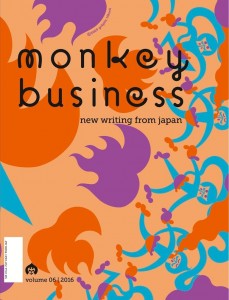
“In addition to the stories profiled here, there are other works that will make you laugh while taking you to a Japan that might not have even existed in your imagination.” (A Public Space)
By Rashaad Jorden (Yamagata-ken, 2008-10) for JQ magazine. A former head of the JETAA Philadelphia Sub-Chapter, Rashaad is a graduate of Leeds Beckett University with a master’s degree in responsible tourism management. For more on his life abroad and enthusiasm for taiko drumming, visit his blog at www.gettingpounded.wordpress.com.
Upon picking up the sixth volume of Monkey Business: New Writing from Japan, the first thought that popped into my head was that I would be introduced to epic Japanese works and/or more prominent authors from the country. After all, several award-winning writers—including Mieko Kawakami, Satoshi Kitamura and Hiroko Oyamada—produce works that appear in this volume. Quite possibly, some of the stories in this 21-piece set might become classics in Japanese literature. Or at the very least, this newbie to the Monkey Business series might discover new aspects of Japan—or be reintroduced to certain things—in rather unforgettable tales.
And well…this edition of Monkey Business doesn’t lack colorful stories. Several of them stand out, including the first one – “Forbidden Diary.” No, it doesn’t serve as an educational tour of Japanese history or culture. Instead, this excerpt of Sachiko Kishimoto’s fictional diary introduces us to a “Phantom Old Man” who has experienced Japan a little differently from the way you might have.
Let’s see…the old man (who is actually being taken care of by the narrator) remembers Shibuya as being totally void of people, as only a haven for rice paddies and without its iconic scramble crossroads. In addition to seemingly arriving out of the Stone Age, the old man repeatedly changes appearances during the story.
Justin’s Japan —Nippon in New York: LuckyRice, New York Japan CineFest, cosplay party, AnimeNEXT
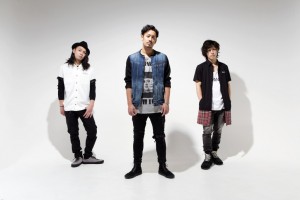
ROOKiEZ is PUNK’D returns to AnimeNEXT, coming to Atlantic City June 10-12. (Courtesy of Animenext.org)
By JQ magazine editor Justin Tedaldi (CIR Kobe-shi, 2001-02) for Examiner.com. Visit his Japanese culture page here for related stories.
After an unusually chilly spring, it’s finally starting to feel like summer. Enjoy some seasonal events this month that celebrate the best of both fine art and pop art.
This month’s highlights include:
Thursday, June 2, 8:00 p.m.-10:00 p.m.
Industry City, 233 37th Street (Brooklyn)
$88 GA, $150 VIP
Last appearing in Gotham for its Ramen Slurpfest back in October, this year’s New York Feast breathes new life this year as we move to a creative hub in Brooklyn to showcase the city’s most enticing Asian food experiences: from Southeast Asia to Western China, from fine dining global restaurants to local superstar mom and pop shops, from traditional dishes to fusion dishes that mash up culinary cultures. Enjoy tastings from over 30 curated chefs (including delectables from Pokéworks, Sushi Samba and Tuome), as well as dozens of craft cocktails, sake, beer, and beverages to keep you spirited throughout the night. VIP ticket holders gain guests one hour early admission.
June 2-3, 6:30 p.m.
Asia Society, 725 Park Avenue
$12, $10 seniors/students, $8 members
Highlighting some of the most exciting new voices in cinema, New York Japan CineFest is an annual event that features works by emerging Japanese and Japanese American filmmakers. Over two programs of short films, standouts includeTOKYO COSMO, an anime study on loneliness; Fall Seven Times, Get Up Eight: The Japanese War Brides, a real-life story about a trio of women who left Japan in the 1950s to start a new life in America; and Keino, a documentary about the eponymous custom motorcycle builder of Brooklyn’s Keino Cycles. A reception sponsored in part by Kirin Brewery of America will follow the first night’s screenings.
Saturday, June 4, 5:30 p.m.
J+B Design & Café, 300 7th Street (Brooklyn)
$8 (free for J-members)
For this Inaugural event, J-Collabo offers a very unique underground theme location for photos. Bring our own camera or have their professional photographer capture your costume! The winner of their contest will receive a special gift from J-Collabo Brooklyn. Enjoy J+B’s Nel drip coffee, Yuzu Ginger Lemon and Yuzu Ginger Ale, exquisite teas, sake, and Japanese morsels while browsing a selection of gorgeous Japanese artisanal merchandise at this neighborhood treasure chest of rare and enchanting items.
For the complete story, click here.
Justin’s Japan: New York Japan CineFest
By JQ magazine editor Justin Tedaldi (CIR Kobe-shi, 2001-02) for Shukan NY Seikatsu. Visit his Examiner.com Japanese culture page here for related stories.
Next month, New York Japan CineFest returns to Asia Society for two nights of short films by emerging Japanese and Japanese American filmmakers, highlighting some of the most exciting new voices in cinema today.
This annual festival was originally founded by two filmmakers, Yasu Suzuki and Kosuke Furukawa, and event producer Hiroshi Kono of Mar Creation, Inc. It debuted in 2012, and this year’s event is presented by Mar Creation and Citi Series on Asian Arts and Culture, offering 13 short films ranging from five to 40 minutes each. While there are no official categories for New York Japan CineFest, genres include drama, comedy, documentary, animation, and stop-motion animation.
Standouts include TOKYO COSMO, an anime study on loneliness; Fall Seven Times, Get Up Eight: The Japanese War Brides, a real-life story about a trio of women who left Japan in the 1950s to start a new life in America; and Keino, a documentary about the eponymous custom motorcycle builder of Brooklyn’s Keino Cycles.
All of this year’s films were originally released in the last two years. Many are debuting for the first time in New York, and a reception sponsored in part by Kirin Brewery of America will follow the first night’s screenings.
New York Japan CineFest will be held June 2-3 at Asia Society, 725 Park Avenue. For more information, click here.
Justin has written about Japanese arts and entertainment since 2005. For more of his stories, visit http://exm.nr/1qXud3i.
Podcast: Finding an IT Career in Japan – JETAA International
Posted by Sydney Sparrow, an ALT currently living in Toyota City. Click here to join the JETwit Jobs Google Group and receive job listings even sooner by email.
Topic: Finding an IT Career in Japan
Posted by: JETAA International – After JET Podcast
The After JET podcast features a series of discussions with the JET alumni community, on things such as careers after JET, projects and life in general. It is hosted by Eden Law, a JET alumni from Sydney Australia, a member of JETAANSW, President and Country Representative.
He has recently created two podcasts on Finding an IT Career in Japan.
Finding an IT Career in Japan: Part I: Job hunting in Japan? Looking for IT roles? Join me as I talk to John Littlefair-Molin, a software engineer in Osaka, and Evan Storer, an e-discovery service specialist, in Tokyo. Also joining the discussion are Andy Shartzer and Tierra Tank, two final year JETs. See below for resources.
In this first part, we discuss whether language proficiency is important (watch out for keigo!), IT career options, on the job training, working conditions in Japan. We also discussed different contracting options, and the importance of checking your work contract, and about recruitment agents – which is probably a good time now to add the disclaimer that any opinions expressed are purely that of the speaker, and may not necessarily reflect the official or personal stance of everyone else.
Finding an IT Career in Japan: Part II:We continue our discussion about job hunting in Japan (in IT). In this 2nd part, we talk about online job searching, the intricacies of preparing a Japanese-style resume, and also the interview experience. Quite a lot of terminology here, which you can see explained below. As last time, participating in this discussion are John Littlefair-Molin, a software engineer in Osaka, and Evan Storer, an e-discovery service specialist, in Tokyo. Also joining the discussion are Andy Shartzer and Tierra Tank, two final year JETs. Useful resources at the end of this page.
JQ Magazine: JQ&A with Patrick Bartley of J-MUSIC Ensemble

“When it comes to art, there’s always a certain level of intensity that I like, because I like seriousness—especially when it comes to an almost religious seriousness in doing music or art for a higher presence. I love that about Japanese aesthetics.” (Armando Zamora)
By Rashaad Jorden (Yamagata-ken, 2008-10) for JQ magazine. A former head of the JETAA Philadelphia Sub-Chapter, Rashaad is a graduate of Leeds Beckett University with a master’s degree in responsible tourism management. For more on his life abroad and enthusiasm for taiko drumming, visit his blog at www.gettingpounded.wordpress.com.
People from all over the world come to New York to launch their careers in entertainment. But can you do so in the world of Japanese music?
Patrick Bartley has. A Florida native who was inspired at a young age by the sounds of classic video game scores like Sonic the Hedgehog and Streets of Rage, Bartley came to New York to study at the Manhattan School of Music and later formed the J-MUSIC Ensemble, an multi-instrumental group that mixes the various genres that make up the Japanese music scene. A Grammy-nominated saxophonist and composer with a jazz background, Bartley formed the group as a way to express his admiration for the music he first discovered through video games, anime themes and J-pop classics.
The J-MUSIC Ensemble is currently recording their debut album, and their numerous live performances over the past year have led to this week’s release of the band’s first-ever single, FUTUREBOUND, available May 6. The group is celebrating with a special launch party performance that night at Shrine World Music Venue in Manhattan, followed by a performance at ShapeShifer Lab in Brooklyn May 8 with Tokyo electronic music pioneer Coppé and recording artist Kaoru Watanabe.
Keeping busy as a fulltime musician, Bartley has performed with artists as diverse as Wynton Marsalis, Steve Miller and Igor Butman, and earlier this year he bantered on-camera with Stephen Colbert for a taping of The Late Show as a guest with house band Jon Batiste and Stay Human. En route to another gig earlier this year, JQ caught up with him over falafel in Harlem for this exclusive interview.
What should readers know about the J-MUSIC Ensemble?
Even though we feature singers, when you go to a J-MUSIC Ensemble concert, you’re going to experience the music you’re used to hearing in a totally different way, because we put the horns in the front line in the same positions as singers. We want you to feel the horns just as powerfully as you would hear the other elements like the dancing and the singing. But this time, you’re putting the music under a microscope and really giving you the full experience. We’re also taking these songs and putting improvisational elements into it—we’re taking a microscope and putting jazz elements into it. But at the same time, we’re keeping the core essence of the music. We’re not just playing jazz songs; we’re taking the jazz mentality. We’re still playing rock. We’re still playing funk. We’re still playing pop. We still feel that exact feeling, but with a human element—live instruments and live bands performing it. There’s really nothing like it.
What projects are you and the J-MUSIC Ensemble working on at the moment?
The most recent thing we’re excited about is our single release on May 6. With this, people can finally get real, downloadable audio files to keep with them no matter what, and in high quality! We spent a great deal of time and invested a lot to get this working, and the mixes and masters turned out great. Other than this, the band itself is really the project. The way I think of this, project-wise, is I’m constantly looking at this huge, vast sea of Japanese music, art, and cultural history—and I often find myself asking the question, “Where do I start?” So, in that regard, I usually pick what I think can work best for the band, so that we can spend time developing our sound and finding what our natural tendencies are, you know? As well as just what the optimal horn sounds are, and if stuff is electronic, I have to figure out what’s possible to play live with real instruments. Right now, we’ve found that [J-pop band] Perfume is perfect for our instrumentation, so we’re going to keep exploring that, mainly, until we continue to find our sound.
How has Japan influenced your music?
The way Japan has influenced my music has been through understanding the history of the country. And even though I really haven’t gone there, I observe as much as I can, such as the intensity by which they operate on a day-to-day basis in everything. When it comes to art, there’s always a certain level of intensity that I like, because I like seriousness—especially when it comes to an almost religious seriousness in doing music or art for a higher presence. Like actually taking it seriously and creating something that no matter what creates deep emotions and passions.
I love that about Japanese aesthetics. That always has touched me and I think I’ll never really forget it. And then there’s the language, too. It’s a totally different way of thinking, so it’s influenced the way I think about rhythm.
Justin’s Japan — Nippon in New York: Babymetal, Anime Fan Fest, Coppé, Eir Aoi, Hatsune Miku

Babymetal returns to New York at the PlayStation Theater May 4. (Courtesy of PlayStationtheater.com)
By JQ magazine editor Justin Tedaldi (CIR Kobe-shi, 2001-02) for Examiner.com. Visit his Japanese culture page here for related stories.
As spring continues and the weather continues to warm, New Yorkers can enjoy activities all over the city both indoors and out.
This month’s highlights include:
Wednesday, May 4, 8:30 p.m.
PlayStation Theater, 1515 Broadway
$49.50
New York City welcomes the return of Babymetal, a genre-smashing trio of teenage girls who perform a fusion of metal and idol music dubbed kawaii(cute) metal. After playing to a capacity crowd at Hammerstein Ballroom in 2014, the group returns to support its second album Metal Resistance, now available on Amazon and iTunes. After playing venues like the Tokyo Dome and Wembley Arena in London, Babymetal is poised to become one of the biggest (and widely known abroad) Japanese musical acts today.
Friday, May 6, 8:00 p.m.
Shrine, 2271 Adam Clayton Powell Jr. Boulevard
Free
J-pop meets jazz! The J-MUSIC Ensemble is an NYC-based, jazz-rooted instrumental band that is devoted to bringing new perspectives to modern Japanese music, showcasing a fresh take on the best of J-pop, anime and video game tunes. This strikingly sonorous eight-piece band combines the elements of the electric guitar, keyboards, bass, and drums with a full horn section—saxophone, trumpet, and trombone–to deliver a full and powerful, yet dynamic, sound. Following in the jazz tradition, the horns do not play a background role in this instrumentation; instead, they are at the forefront and are put in the same role as leading singers.
May 6-8
Garden State Exhibition Center, 50 Atrium Drive, Somerset (NJ)
$32-$114, children under 10 free
OTAKU USA Magazine, the largest anime and manga magazine in the U.S., and MAD Event Entertainment producers of Comic Con in Long Beach, CA, has partnered to produce the OTAKU USA Anime Fan Fest at the Garden State Convention Center. The first year event features a star-studded guest list of voice actors, cosplayers, and more! “After producing countless events celebrating comics and pop culture, and our first convention in New Jersey having been such a success, we decided the time was right to produce an anime show” said Martha Donato, executive director and founder of MAD Events. “When we had the opportunity to co-produce this event with the number one magazine for anime and manga, we knew we had the makings of what will be one of the biggest weekends of the year for fans in New Jersey!”
For the complete story, click here.





